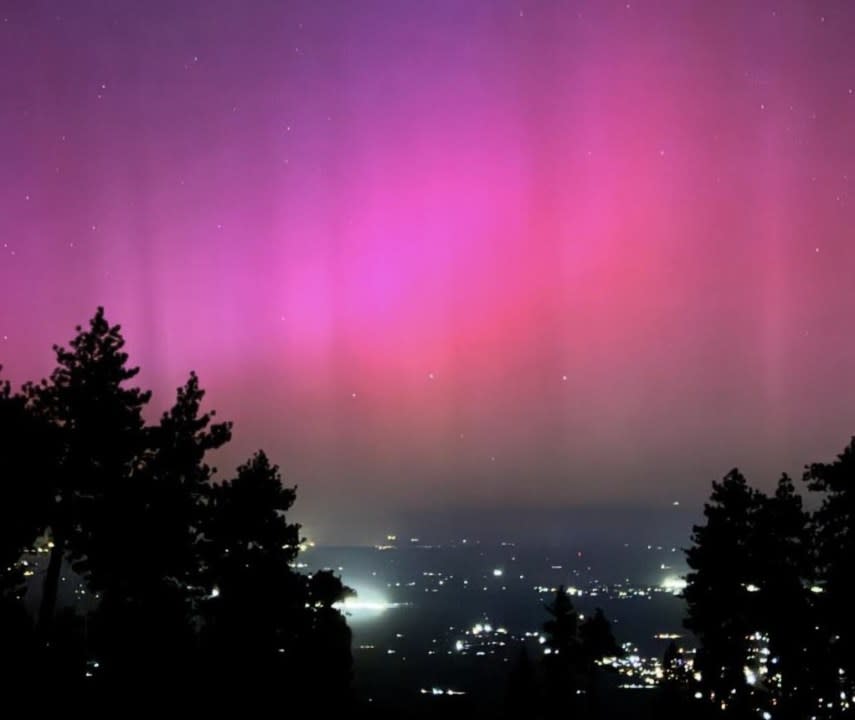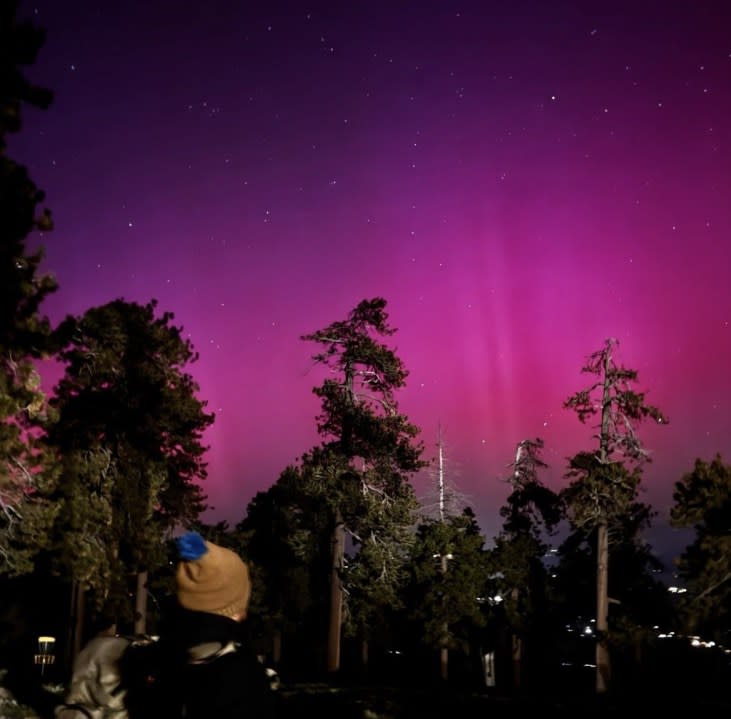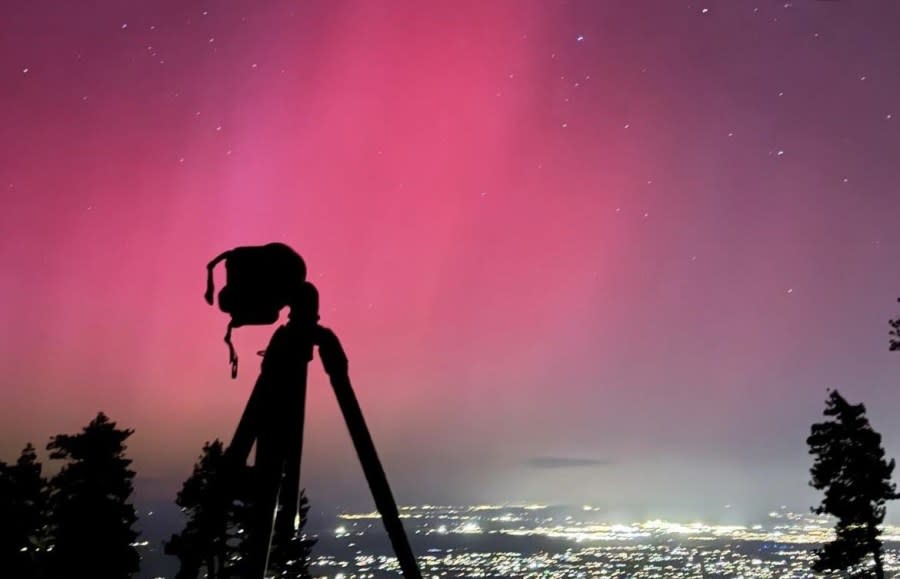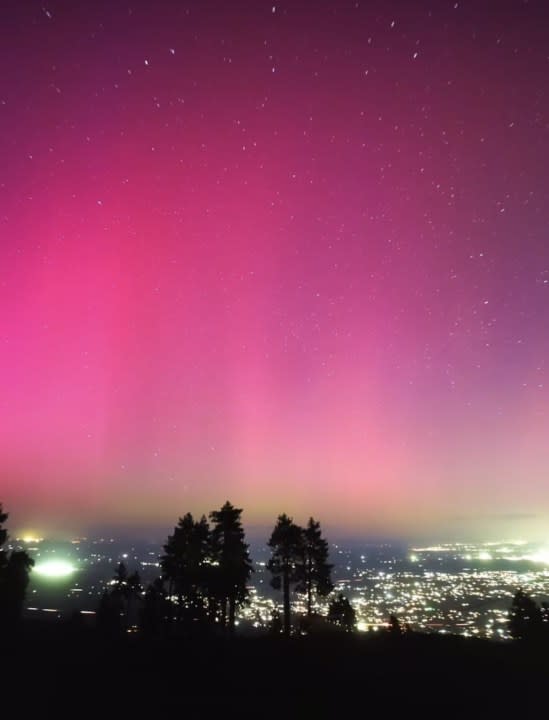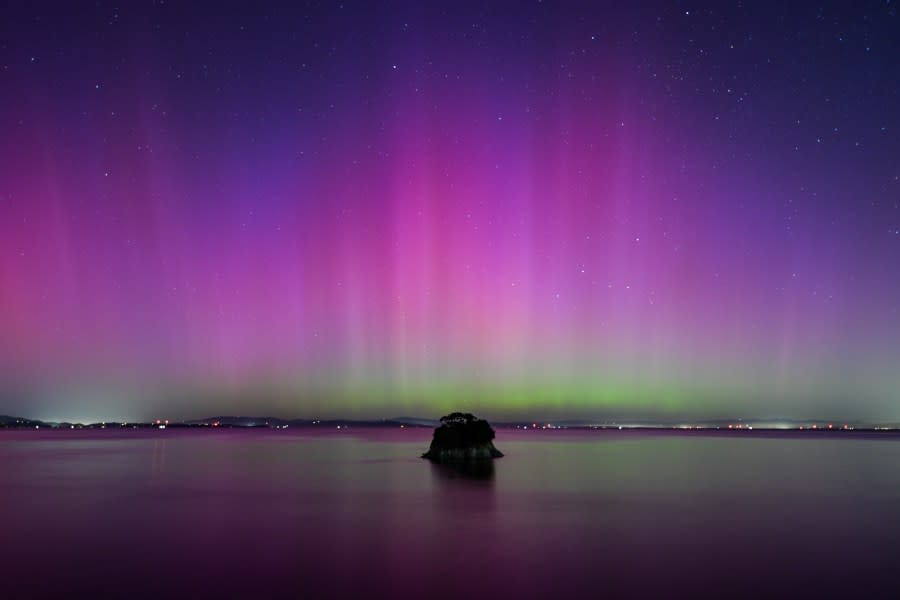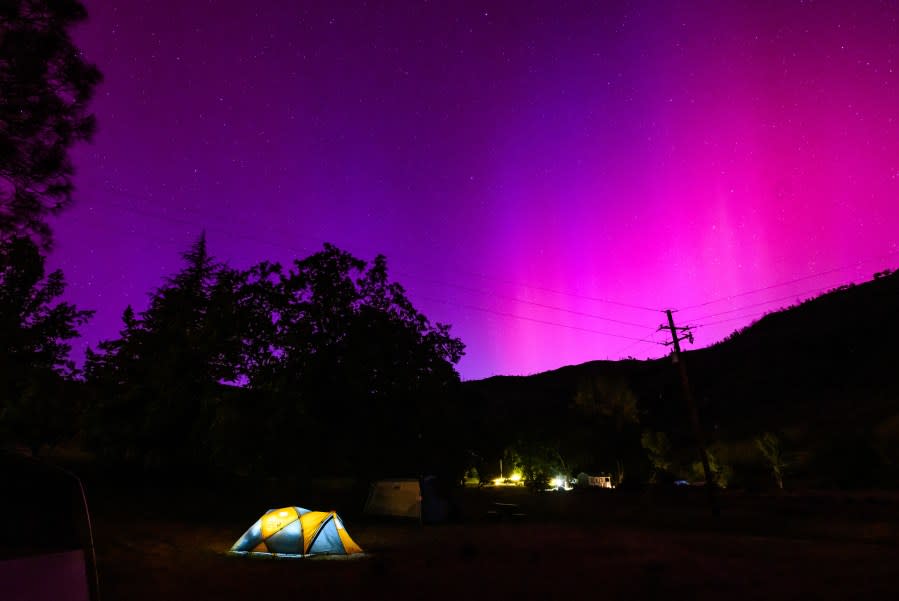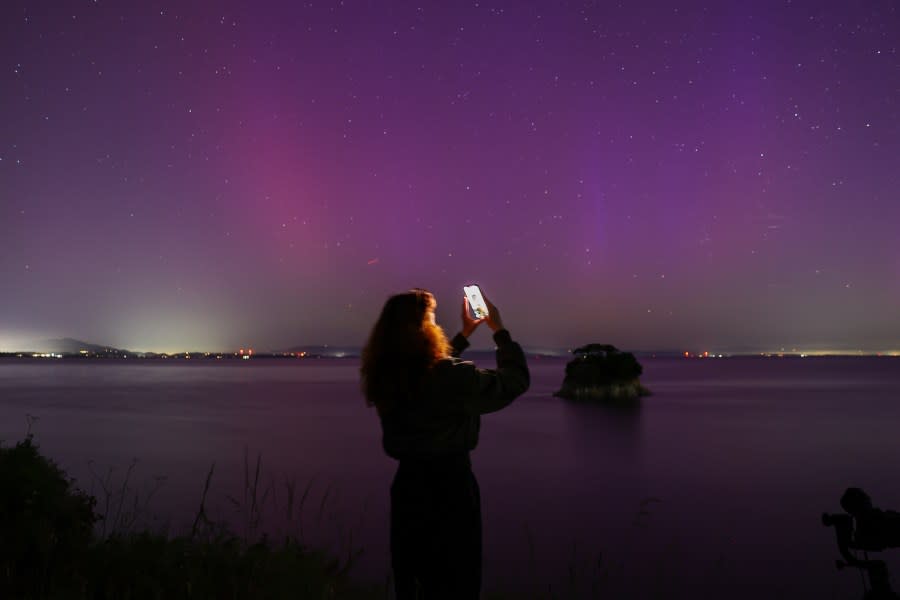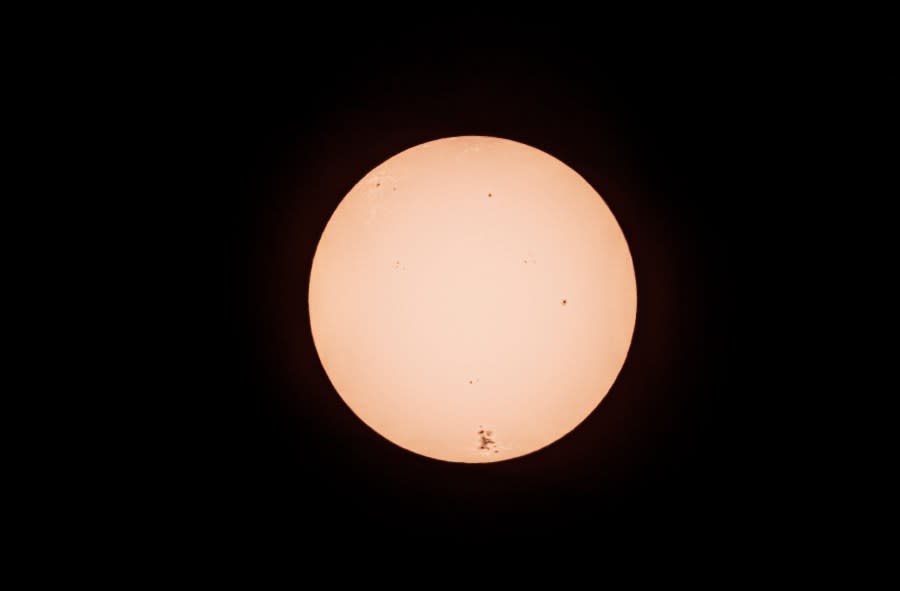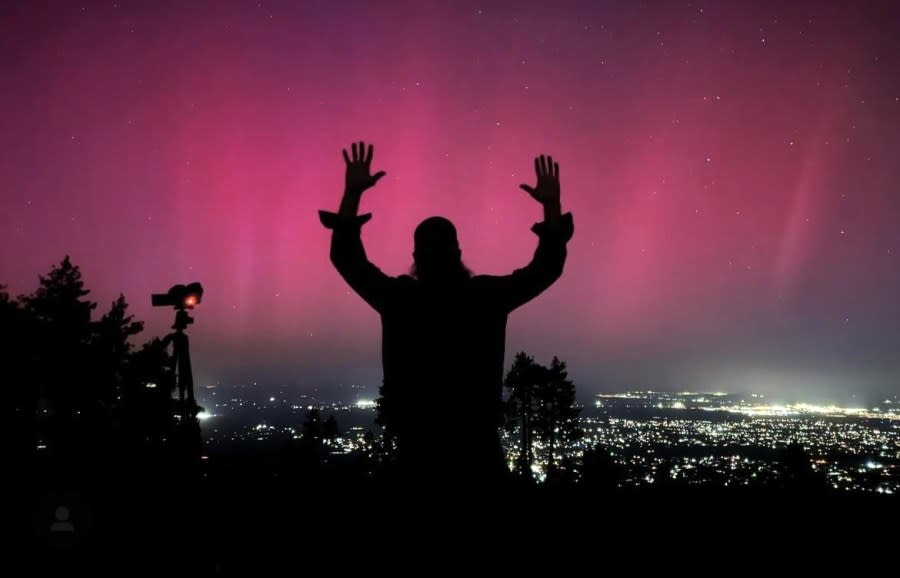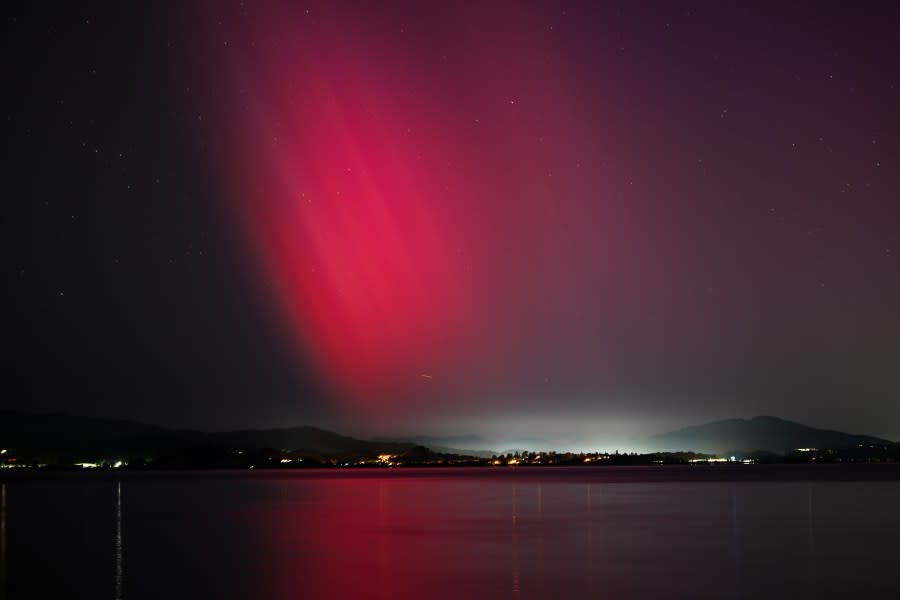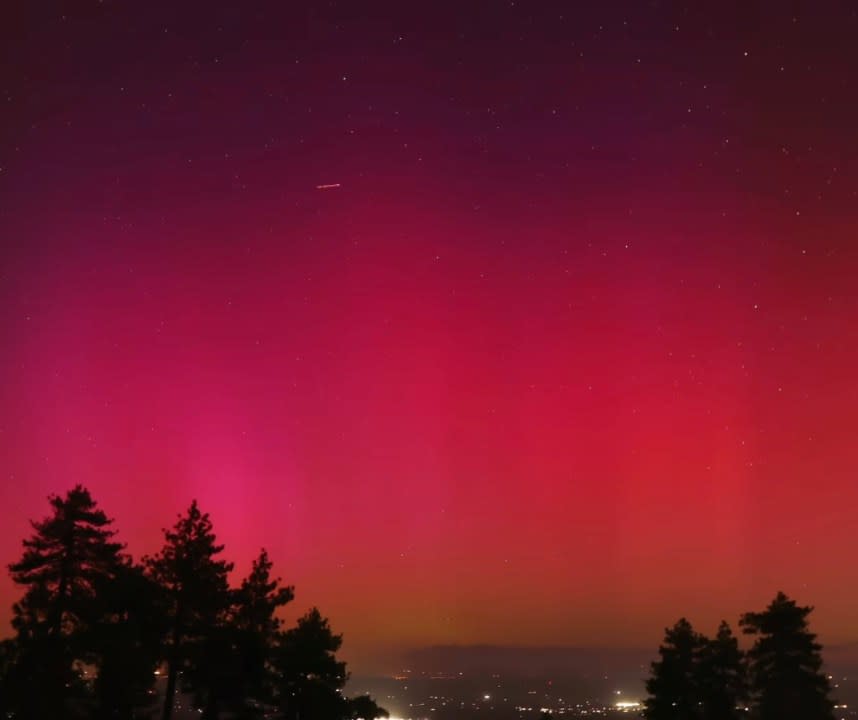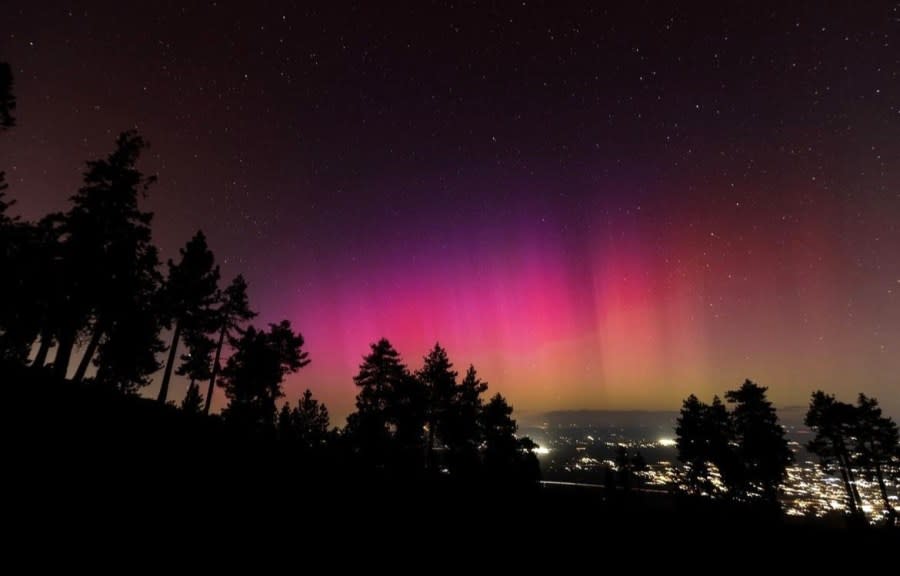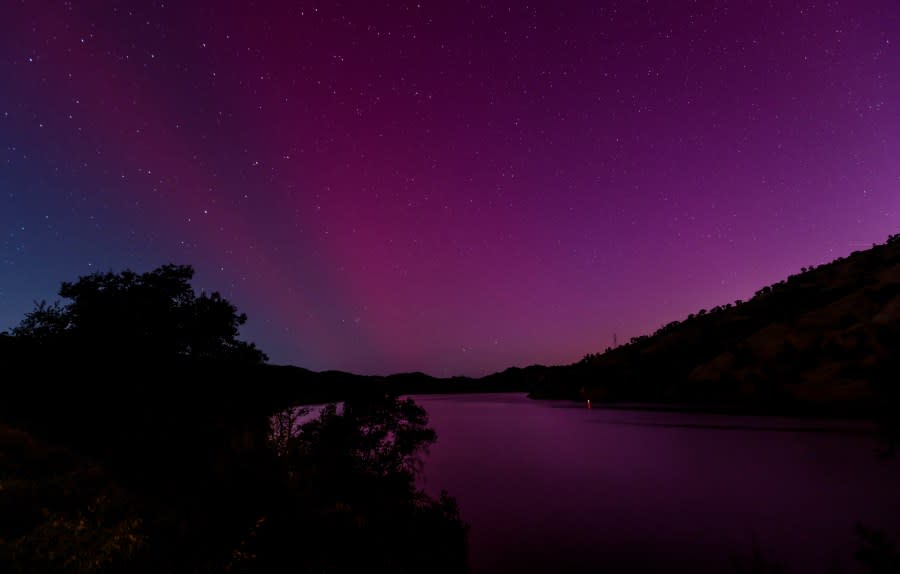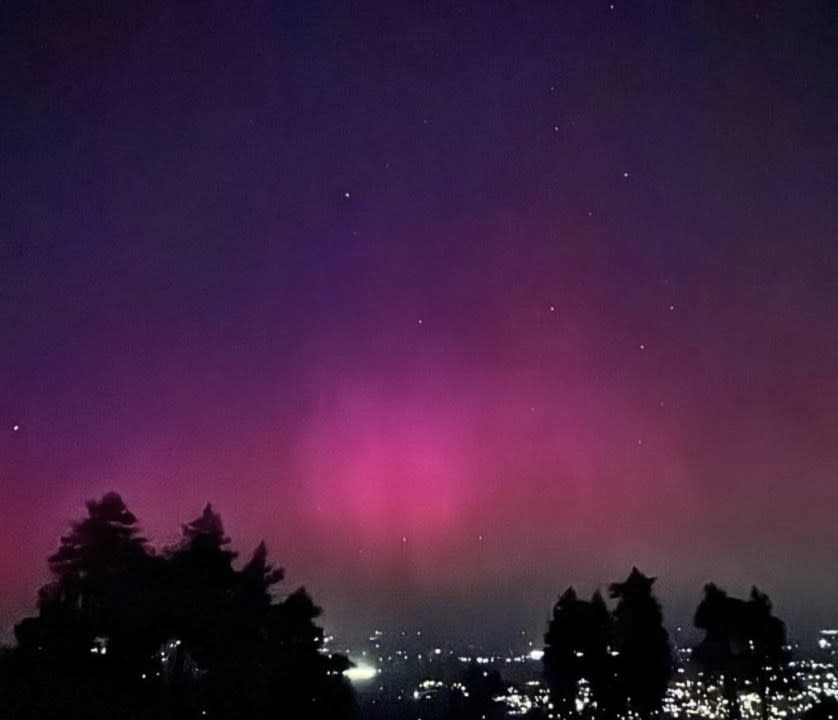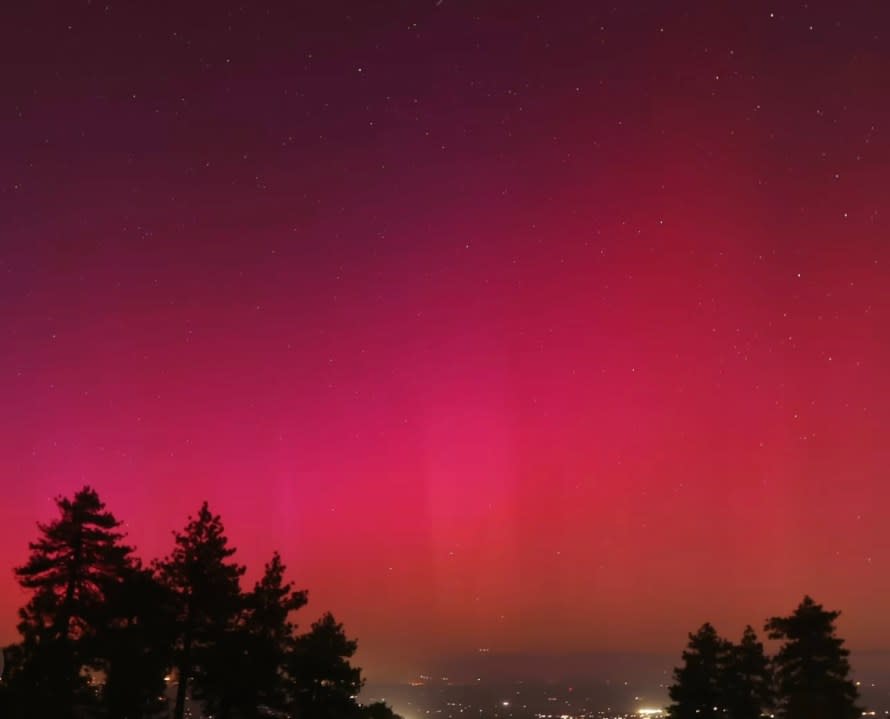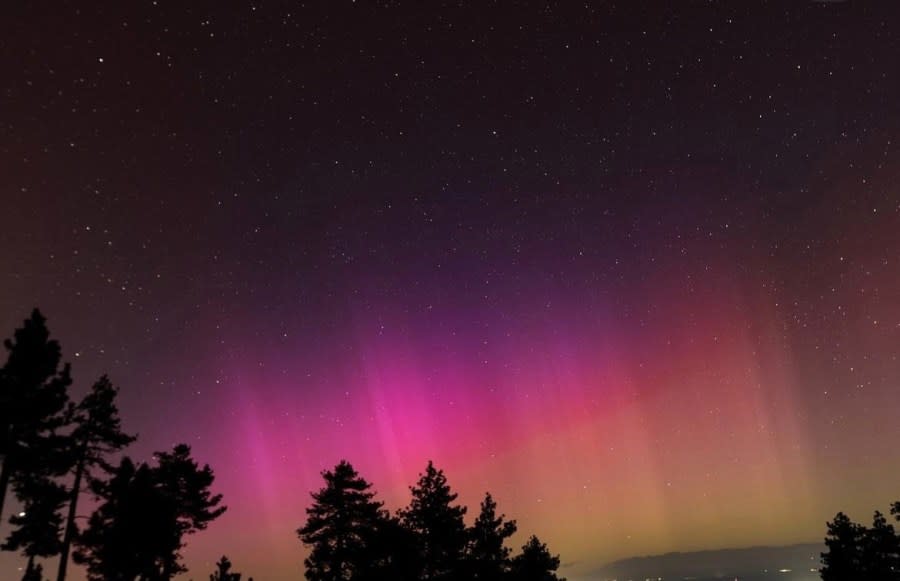Rare solar storm brings northern lights to Southern California
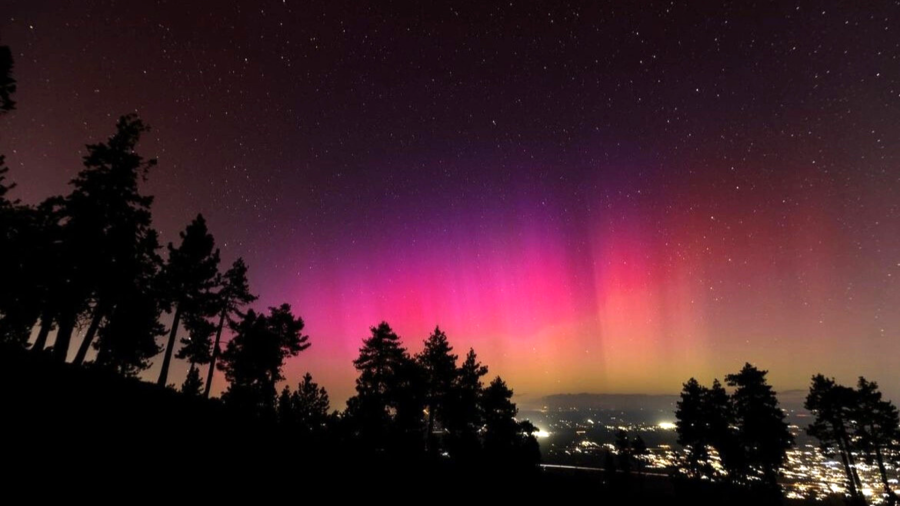
Lucky viewers enjoyed a once-in-a-lifetime sight as a strong geomagnetic storm brought the northern lights to Southern California this weekend.
Onlookers enjoyed the breathtaking view as the skies turned a brilliant electric shade of purple, pink, green and yellow hues.
The aurora borealis was caused by a strong geomagnetic storm that hit the earth this weekend and was visible across the country and throughout California. The solar storm is the largest to hit the U.S. in over two decades.
Viewers from across the state reported spotting the magnificent sight from down south in San Diego and up through Northern California.
SoCal photographer Patrick Coyne captured the colorful spectacle from a viewpoint near Mountain High in the San Gabriel Mountains on Friday night.
“Last night absolutely felt like a dream,” Coyne shared on his Instagram. “We had the privilege of seeing the Northern lights here in Southern California! The geomagnetic storm had a KP index of 8 which is why we got to see it all the way down here at Mountain High. The entire sky showed this gorgeous red/pink color and you could absolutely see it with your eyes.”
The northern lights captured near Mountain High in Southern California on May 10, 2024. (@newadventuresdaily_) The northern lights captured near Mountain High in Southern California on May 10, 2024. (@patrickc_la) The northern lights captured near Mountain High in Southern California on May 10, 2024. (@patrickc_la) The northern lights captured near Mountain High in Southern California on May 10, 2024. (@newadventuresdaily_) The northern lights captured near Mountain High in Southern California on May 10, 2024. (@patrickc_la) CALIFORNIA, USA – MAY 11: Northern Lights (Aurora Borealis) illuminate the sky of San Francisco North Bay as seen from China Camp Beach in San Rafael, California, United States on May 11, 2024. (Photo by Tayfun Coskun/Anadolu via Getty Images) The blinking lights of a plane streak through the Aurora Borealis, also known as the Northern Lights, which is visible over Lake Berryessa, Calif., early Saturday, May 11, 2024. (Carlos Avila Gonzalez/San Francisco Chronicle via AP) Northern lights or aurora borealis illuminate the night sky over a camper’s tent north of San Francisco in Middletown, California on May 11, 2024. The most powerful solar storm in more than two decades struck Earth, triggering spectacular celestial light shows from Tasmania to Britain — and threatening possible disruptions to satellites and power grids as it persists into the weekend. (Photo by JOSH EDELSON / AFP) (Photo by JOSH EDELSON/AFP via Getty Images) CALIFORNIA, USA – MAY 11: Northern Lights (Aurora Borealis) illuminate the sky of San Francisco North Bay as seen from China Camp Beach in San Rafael, California, United States on May 11, 2024. (Photo by Tayfun Coskun/Anadolu via Getty Images) A photo of the sun using a white light solar filter, which captures the visible photosphere, shows the large area of sun spots and surface activity as seen from Oakland, Calif., Saturday, May 11, 2024. The sun has produced strong solar flares since Wednesday, resulting in at least seven outbursts of plasma. NOAA predicted that the flares will continue through at least Sunday. Brilliant purple, green, yellow and pink hues of the Northern Lights were reported worldwide. (Carlos Avila Gonzalez/San Francisco Chronicle via AP) The northern lights captured near Mountain High in Southern California on May 10, 2024. (@newadventuresdaily_) CALIFORNIA, USA – MAY 11: Northern Lights (Aurora Borealis) illuminate the sky of San Francisco North Bay as seen from China Camp Beach in San Rafael, California, United States on May 11, 2024. (Photo by Tayfun Coskun/Anadolu via Getty Images) The northern lights captured near Mountain High in Southern California on May 10, 2024. (@newadventuresdaily_) The northern lights captured near Mountain High in Southern California on May 10, 2024. (@newadventuresdaily_) The Aurora Borealis, also known as the Northern Lights, is visible over Lake Berryessa, Calif., early Saturday, May, 11, 2024. (Carlos Avila Gonzalez/San Francisco Chronicle via AP) The northern lights captured near Mountain High in Southern California on May 10, 2024. (@newadventuresdaily_) The northern lights captured near Mountain High in Southern California on May 10, 2024. (@newadventuresdaily_) The northern lights captured near Mountain High in Southern California on May 10, 2024. (@newadventuresdaily_)
Coyne was joined by several photographers who also captured dazzling shots including Jason Anderson.
“As we all looked towards the sky, something like this has not happened for at least 20 years,” Anderson said. “The northern lights showed up in Southern California. The actual aurora borealis. Something that many from around the world travel thousands of miles to witness and this showed up in our own backyard.”
According to the NOAA’s Aurora Forecast, the majority of households who saw the northern lights on Friday night will have a chance to watch them again on Saturday night.
On Friday night and Saturday morning, “extreme” G5 geomagnetic storms were observed, according to the NOAA. The last time a G5 solar storm occurred was in 2003 when it caused major power problems in Sweden and South Africa.
Geomagnetic storms can be caused when the sun sometimes emits a strong surge of solar wind called a coronal mass ejection (CME). Those CMEs can cause geomagnetic storms when directed at the Earth,” according to the U.S. Geological Survey.
“Geomagnetic storms can impact infrastructure in near-Earth orbit and on Earth’s surface, potentially disrupting communications, the electric power grid, navigation, radio and satellite operations,” said USGS.
However, geomagnetic storms can also trigger spectacular displays of aurora on Earth.
NOAA’s Space Weather Prediction Center rates the strength of solar storms on a G scale — from G1 to G5. The current storm was initially rated as G4 severity, though it ultimately intensified to G5. The severity is what makes the storm so unique.
“This is an unusual and potentially historic event,” said Clinton Wallace, Director of NOAA’s Space Weather Prediction Center.
The aurora activity is scheduled to continue Saturday night. It could potentially linger through Sunday, May 12 and even early next week, NOAA said, as solar activity remains especially high.
Those hoping to catch a glimpse of this historic event should head away from the city and into remote desert or mountain areas to avoid any light pollution.
The best bet to see the lights is between 10 p.m. and 2 a.m.
If you look up and don’t see anything, people with newer cell phones might just be able to catch a view that’s better than what can be seen with the human eye.
Footage of the northern lights captured near Mt. High in Southern California can be seen in the video player above.
For the latest news, weather, sports, and streaming video, head to KTLA.

